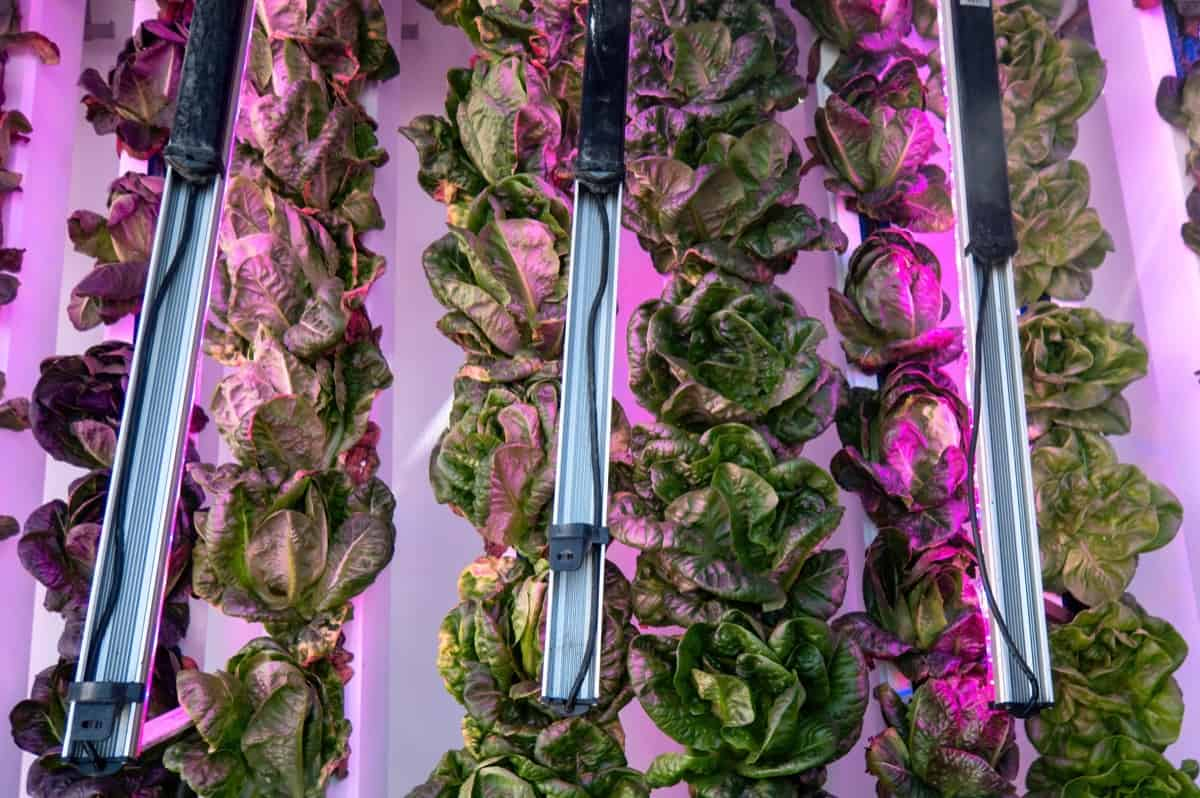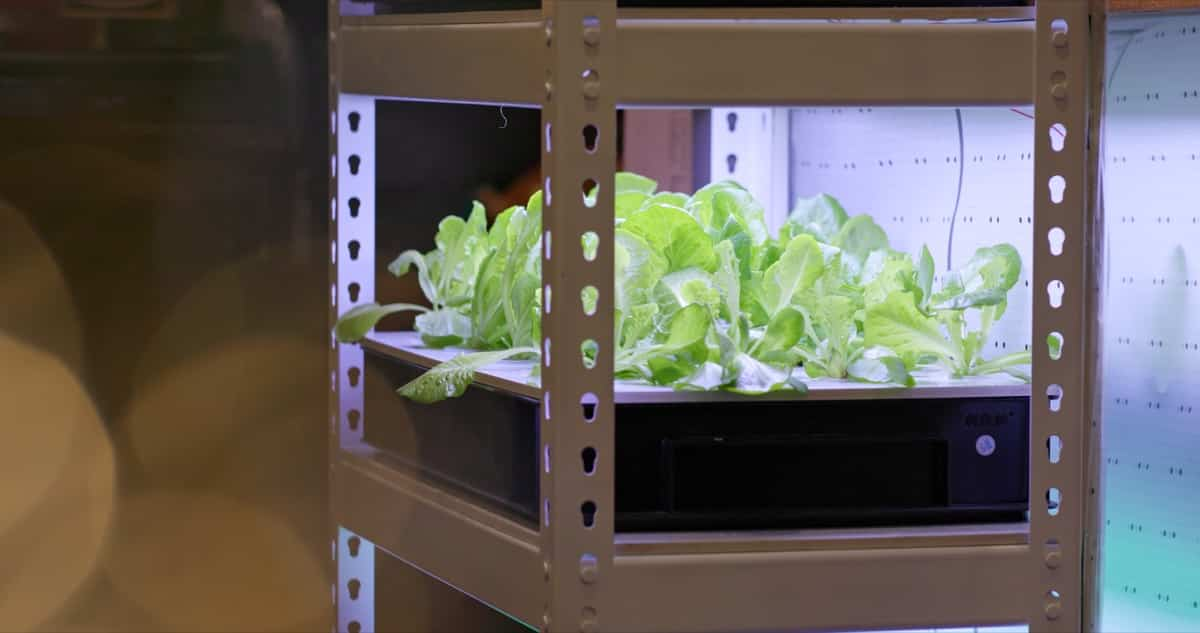Hydroponics is the process of growing plants without soil horizontally or vertically, in which mineral nutrients are provided through the water. Hydroponics allows plants to grow vertically, known as vertical hydroponics. In vertical hydroponics, conventional hydroponics techniques are used in a gravity-fed, vertical system. It feeds nutrient-rich water from the top and collects it at the bottom. In comparison with traditional crop production methods, vertical hydroponics offers many advantages, including:
- Provides a high yield per unit area.
- Good for rooftops, balconies, and patios that get a lot of sunlight.
- It allows year-round production.
- Water efficiency is often greater than 90%.
- There are no soil-borne diseases.

How to Build a Cheap Hydroponic Tower Garden
Tower Garden
Tower gardens, also known as window farms, are vertical hydroponic systems that consist of an A-Frame hydroponic system, a hydroponic wall, and cascades of bottles. Crops such as strawberries, lettuce, Swiss chard, herbs, spinach, kale, broccoli, and petunia can be grown. You can get these systems online but build your own tower garden for much less. Lights above the tower can also be used to grow plants indoors, which is popular in urban areas with limited gardening space.
With two towers in a five-foot by five-foot space, the tower garden described here produces 56 plants simultaneously, with 28 plants per tower. Depending on preference, the design can be modified. For example, a single tank can collect the nutrient solution by hanging towers from the top. Most of the required materials can be purchased at a hardware store. If the net pots are not available locally, try to procure them from nearby hydroponic dealers or get it from eCommerce websites. Material for towers should be food-grade if modified.
Steps for Building Hydroponic Tower
- Cut a 5-inch x 5-inch x 8-foot white vinyl fence post to the desired height. Typically, vertical towers should be between 5 and 6 feet tall and easily accessible.
- Use the square template listed under the template links on the last page to drill a hole in the plastic sheet used to make the fence post (tower) lid.
- On the tower, place the net pothole template according to the spacing of the crop you want to grow. Ensure that the pots do not touch each other inside the tower by staggering the holes on each side.
- Apply adhesive to the fence post and paste the pothole template on it.
- Drill a hole in one end of the template to use the jigsaw.
- Cut a pothole of the same size as the template using the jigsaw.
- Make a 45-degree angle and 2.25-inch high cut in a 3-inch PVC pipe. It is important to prepare the net pot support in this manner. The pothole size and net pot support must be modified if the size of the net pots changes in the tower.
- A template for the bottom holes of the tower can be used to cut a rectangular hole at the bottom. Water will be able to exit from the top because of this.
- Put the net pot holder in the bottom of the net pot hole on the tower. Sandpaper should be used to rub the area where the net pot holder needs to be glued. Let the PVC epoxy set for two to three hours on the bottom of the net pot hole with the net pot holder on top and some weight on it. The net pot holders should be fixed along the tower’s length.
In case you missed it: How to Start Terrace Hydroponic Farming: Key Rules, Tips, and Benefits

- Two white vinyl pyramid post tops should be used to prepare the tower’s top. A 1/2-inch hole should be drilled through the top of the tower, and a tee barb should be passed through it to supply nutrient solution.
- Drill holes on all sides of the white vinyl pyramid post top to distribute nutrient solution throughout. Drill approximately ten holes at random.
- The hinges on both white vinyl pyramid post tops are used to attach them. Cover the screws with clear silicone for corrosion prevention, and attach the top with holes to the tower using another hinge.
- Cut a white vinyl blind with dimensions of 5/8-inch by 5/8-inch by 8 feet, stopping molding after each piece measures 4 inches. Apply sandpaper to the side of this piece, which must be attached to the tower. Ensure that each net pothole is rubbed inside the tower. The rubbed edge should be coated with PVC epoxy and placed inside the tower. By doing so, the nutrient solution will be distributed more evenly throughout the tower.
- Mark the edges of the net pot that touch the top of the net pothole when you place the net pot in a net pothole. Use a soldering iron to melt this area. By doing so, water will not flow along the edge of the pot outside the tower, and it will be easier to place the pot into the hole.
- Cut out a covering piece and attach a hinge to make a lid for the reservoir. Clear silicone can be applied to aquariums to prevent screws from corroding. By doing this, pH/EC monitoring and adding a nutrient solution to the reservoir will be easier.
- The reservoir cover should be drilled again to allow a nutrient supply hose to pass through.
- Connect the nutrient supply hose to the outlet of the submersible pump and place it in the center of the reservoir.
In case you missed it: How to Start Vertical Hydroponic Farming at Home: Step-By-Step Guide for Beginners

- Put a T barb on the hose of the nutrient supply at the same height as the tower to supply both towers with nutrient solution.
- A timer can be used to control the pump’s operation. It may be necessary to water the tower at intervals depending on the type of crop grown there. For example, strawberries should be watered once every hour for seven to 10 days, while lettuce can be watered continuously for 24 hours.
- Place the net pot in a net pot hole, add some expanded clay balls or other media, and then place the plant on top. In addition, fill the area around the plant with clay balls.
- The pump should be started. Splashing water may wet plants’ leaves if it comes out of the pot. This can cause fungal diseases and plant death. To prevent this, make a shield from an aluminum sheet the same size as the template for the water splash shield. Above the clay balls, place this shield over the pothole opening. As a result, the plant will not be splashed by the nutrient solution.
- A wire or a bar can support the tower from the top.
Conclusion
The human population is growing rapidly, meaning less land is available for gardening. Hence, tower gardens, also known as vertical farms, have emerged as a solution to finding spaces to plant crops. The tower gardens work similarly to skyscrapers, making the most of limited space. Hydroponics practitioners often have small spaces where they wish to grow crops, which explains why the concept appeals to them.
- Ultimate Guide to Ossabaw Island Hog: Breeding, Raising, Diet, and Care
- Ultimate Guide to Juliana Pig: Raising Facts, Size, Diet, Care, and Lifespan
- Raising Lleyn Sheep: Disadvantages, Price, Uses, Characteristics, and Care
- Ultimate Guide to Meishan Pig: Breed Facts, Breeding, Raising, and Care
- Ultimate Guide to Teacup Pigs: Raising, Diet, Lifespan, Cost, and Care
- Guide to Raising Poll Dorset Sheep: Facts, Profile, Characteristics, Uses, and Care
- Ultimate Guide to Bighorn Sheep: Characteristics, Diet, Lifespan, Breeding, and Lifecycle
- Ultimate Guide to Raising Katahdin Sheep: Farming Facts, Breed Profile, Uses, and Care
- Ultimate Guide to Raising Oreo Cows: Belted Galloways Farming Facts, Profile, Uses, and Care